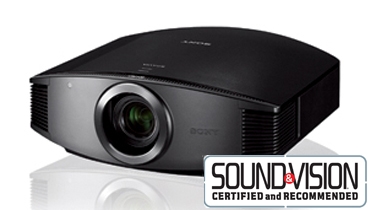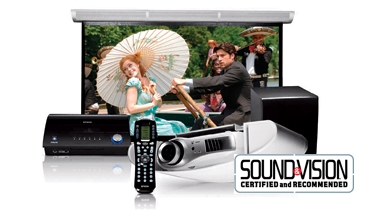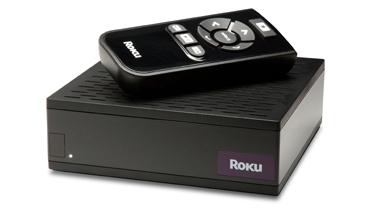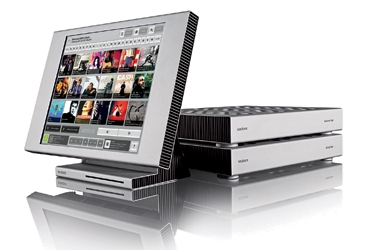Sound & Vision's 2008 Editors' Choice Awards Page 3

SONY VPL-VW70 SXRD front projector January 2009 Even $10,000-plus super projectors might have a hard time outshining the $7,999 VPL-VW70, a fire-breathing 1080p model employing Sony's SXRD projection technology. The VPL-VW70's picture dazzles with intense color, deep blacks, crisp detail, and brilliant whites. The sample I evaluated had a few minor calibration issues, but after a mere half-hour with a color analyzer, I had it dialed in. Controls like a manual iris and Sony's Real Color Processing provide extraordinary adjustment range, and the remote's many dedicated picture functions make fine-tuning quick and easy. This projector is better suited for constant-height 2.35:1 ultra-widescreen projection than most competitors, thanks to its internal image processing and its trigger output for controlling a motorized sled for an anamorphic lens. Complementing the VPL-VW70's video performance is its extraordinarily quiet fan, which is practically inaudible when the projector is hanging from a ceiling. A striking industrial design with motorized lens doors adds to the projector's many merits. - Brent Butterworth sonystyle.com

SONY XEL-1 11-inch OLED TV April 2008 What can be said about Sony's XEL-1, the first OLED (Organic Light-Emitting Diode) TV to hit the consumer market? Let's start with the basics: It has an 11-inch diagonal screen, and displays pictures at 960 x 540-pixel, sub-HD resolution. And then there's the price: $2,500. Does $2,500 sound like too much for an 11-inch TV? Well, consider this next spec: the XEL-1's screen is a mere 3 mm deep - about the same thickness as a stack of three credit cards. Now imagine that same 11-inch diagonal, 3 mm-deep screen blown up to 100 inches. Sony's tiny, wafer-thin OLED is more than a pricey techno-fetish object; it's a sign of what we can expect to see in the future from video displays. And when you consider the XEL-1's astonishing picture, with blacks as deep as those delivered by today's best big-screen TVs, the future is looking mighty good. - A.G. sonystyle.com

EPSON Ensemble HD home cinema system November 2008 Until the Ensemble HD came along, home theater enthusiasts had three choices: an underperforming home-theater-in-a-box system, a good but cumbersome do-it-yourself system, or an expensive custom-installed system. Now there's a refreshingly practical fourth option. Epson and partner Atlantic Technology designed the Ensemble HD to be installed in just a few hours at a total cost that's easy for average homeowners to handle: $4,999 to $6,999, depending on the projector, plus a typical installation fee of $500 to $1,000. Ensemble HD starts with one of Epson's PowerLite Home Cinema LCD projectors, in either a 720p or a 1080p version. The projector hangs in a slick-looking white cradle that also incorporates the surround speakers. The screen rolls down automatically whenever the system is turned on, and the screen housing incorporates the front left, center, and right speakers. The system also includes a potent 10-inch subwoofer, a DVD player/surround processor with a built-in AM/FM tuner, and all necessary cabling and mounting hardware. It wouldn't be easy to assemble a substantially better system for the price, and it'd probably be downright impossible to put together a comparably priced system that looks so great and is so easy to operate. - B.B. ensemblehd.com

ROKU Netflix Player Web exclusive While other Internet-based movie-delivery services have foundered by sticking customers with pay-per-view or pay-to-download charges, Roku's Netflix Player succeeded by enticing an installed base of 8 million Netflix subscribers to make a one-time $100 purchase of a player that lets them instantly view 12,000 movies and TV episodes for free. Even if that number of titles represents only 10% of the Netflix library, it's a nice bonus on top of those DVD- and Blu-ray-Disc-stuffed red envelopes that members regularly receive. Once you use your computer to make a selection, the Wi-Fi-capable Roku player displays the disc's cover art on your TV and plays the title directly over the Internet. Viewers can watch movies as often as they like and bookmark up to 500 different titles. Since the Roku player was introduced, Netflix streaming has been incorporated into LG and Samsung Blu-ray players, TiVo DVRs, and Xbox 360. And Netflix's major competitor, Blockbuster, has since introduced its own on-demand player. But Roku was there first, and its pioneering little box is also prepared to meet new challenges by being HD-ready. - Michael Antonoff roku.com
CUSTOM INSTALLATION

SOOLOOS Music storage and server system February/March 2009 Digital music players are everywhere, and many of them seem to be "me, too!" clones without any design innovation to set them apart from the pack. So leave it to Mother Necessity to produce a product that elevates the category to a new level. Coming from the music industry, Sooloos's founders were looking for a way to manage their own massive music collections. They also wanted the experience to be fun, social, and lightning fast. Unable to find a system that met these demands, they set out to build one. While the Sooloos system ($11,600) - which consists of Source, Store, and Control components - scores high marks all around for its build quality, design, and audiophile sonics, it's the 17-inch Control One touchpanel that steals the show, with an interface that can tame your library whether you have 1,000 songs or 1,000 albums. Browsing with it, you'll explore your collection in ways you never imagined. Want to focus on a genre? Simple. Want to dive deeper and pinpoint subgenres and certain moods? Sure. Want to find every album you own that features Slowhand on guitar or Bill Evans tickling the ivories? Can do. Sooloos actually gets you excited about listening to music again, and that makes it a winner. - John Sciacca sooloos.com




